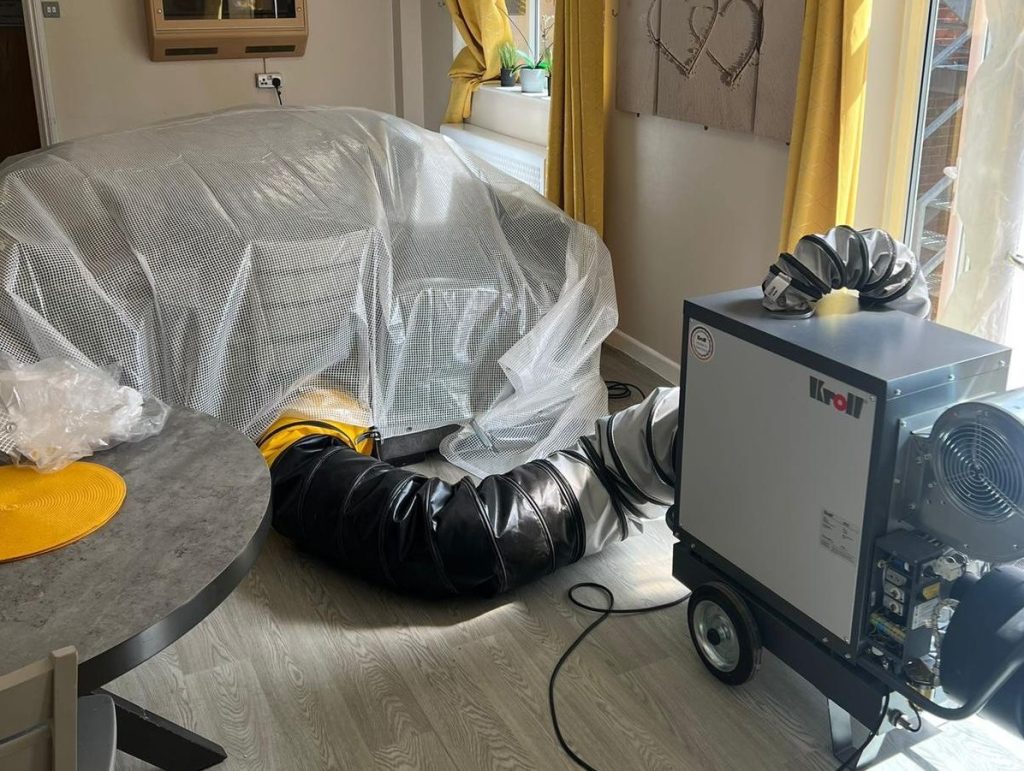What Is The Flea Life Cycle And Why Is It Important?
Fleas reproduce like many insects, by laying eggs. After flea eggs hatch, they turn into flea larvae, which then pupate to become adults. Being so small, it can be hard to see fleas at all their life stages, but it’s important to understand them.
At Mission Pest Control, we have extensive expertise providing flea control services to homes and businesses across Swindon and the surrounding area. Over the years, we’ve noticed that most people know about adult fleas, but many overlook the rest of the life cycle stages.
That’s why we’ve put together this guide to the flea life cycle and why it’s important when dealing with a flea infestation.
The Flea Life Cycle
The flea life cycle consists of four stages: flea eggs, flea larvae, flea pupae and adult fleas. Each stage looks and behaved differently, so keep reading to find out more.
Flea Eggs
Flea eggs are minuscule oval shaped eggs that look like tiny grains of salt. They hatch into larvae after a few weeks, depending on the environment.
Because of their tiny size and milky-white colouring, flea eggs can be difficult to see with the naked eye unless your pet has dark-coloured fur or you’re dealing with a large flea infestation.
The Larval Stage
Flea larvae look like pale maggots, and are between 2-5mm in length. Larvae avoid light, and will often bury themselves deep inside carpets, soft furnishings or pet bedding.
Throughout this stage the larvae will eat organic debris, including flea dirt, or faeces, from the adult fleas. Because flea larvae burrow deep, you need to be thorough when carrying out flea treatment to ensure that you reach and remove them.
The Pupal Stage
The pupal stage is the final life cycle stage before the fleas become adults. It is a protective cocoon that nourishes the larvae and helps them turn into their adult form.
During the pupal stage, the flea is protected, meaning the flea pupae can lie dormant for up to a year without emerging or eating. This is one of the main reasons why flea infestations often return after ineffective DIY flea treatments.
Adult Fleas
Adult fleas are the ones that most people are familiar with. They are just 1-4mm in length and usually brownish-red in colour, with strong back legs.
Due to their small size, adult fleas are often hard to see individually, but you’ll notice them as small dark specks on your pet’s fur or bedding, as well as in your own bed or clothes.
How Long Do Fleas Live?
The flea lifespan depends on a range of factors, including the temperature and humidity, as well as the availability of a host animal to provide a regular blood meal.
Generally, the full flea life cycle can take around 3 months to complete. The female flea lays eggs, which hatch within 1 to 10 days. Once hatched, the larvae will feed on flea dirt for 2-12 days before spinning a cocoon and entering the pupal stage.
Flea pupae can lie dormant for up to a year, depending on environmental factors, or they can become adult fleas in just a few weeks. Adult fleas reproduce and feed for up to 3 months, or as little as a few weeks, before dying.
How Do Fleas Find A Host?
Fleas identify a viable host animal by detecting heat, carbon dioxide and vibrations made by them. Often, fleas spread from animal to animal, usually from pets and their furry friends.
However, even those who aren’t pet owners can still be exposed to fleas, as they can transfer from human clothing, or used furniture.
Fleas have strong back legs, meaning they can jump large distances to reach a new host, so even if you only pass by an infested animal, fleas could still transfer onto your clothes or luggage.
Adult fleas can only live for a few days without a host, but flea pupae can lie dormant inside soft furnishings or pet bedding for up to a year, so it’s important that you eradicate the full infestation effectively to get rid of all the fleas.

How To Get Rid Of Fleas At All Life Cycle Stages
Dealing with an active flea infestation can be stressful and irritating. Unfortunately, most DIY flea control products aren’t effective against fleas at all life cycle stages, and fleas may hide from these products deep inside soft furnishings in your home.
Once there, fleas in the pupal stage can lie dormant for up to a year without a host, so you might think the infestation is gone, only for it to reappear a few days or even months later.
That’s why it’s worth investing in professional pest control for fleas. Mission Pest Control uses cutting-edge heat treatment solutions to remove fleas and other insect pests, including bed bugs, cockroaches, moths, carpet beetles, woodworm and others.
With heat treatment, infested items or rooms are heated to 50°C to 60°C (122°F to 140°F), which is a chemical-free way to effectively get rid of fleas at all stages of the life cycle.
This solution kills fleas quickly and effectively, making it ideal both for commercial premises and homes across Swindon and beyond.
To book heat treatment for your flea infestation, contact us on 01793 379333 or by emailing hello@missionpestcontrol.co.uk.
